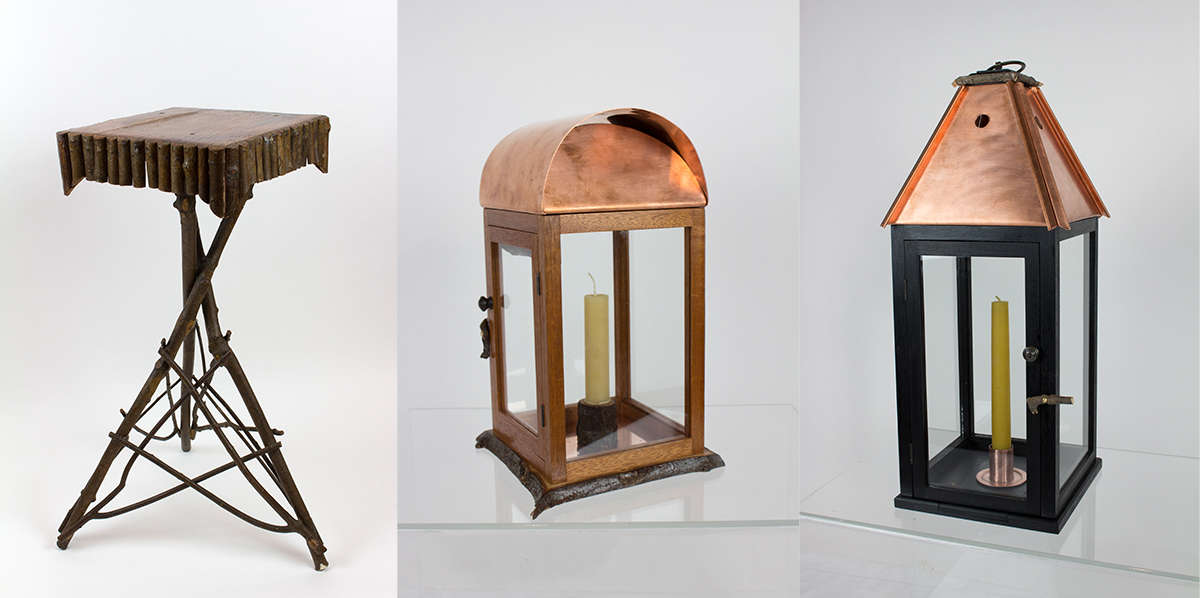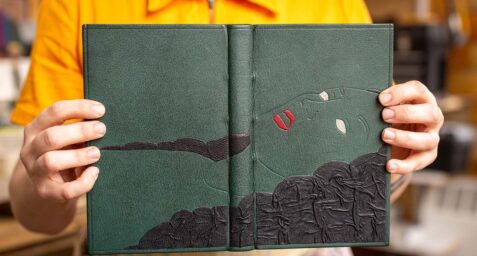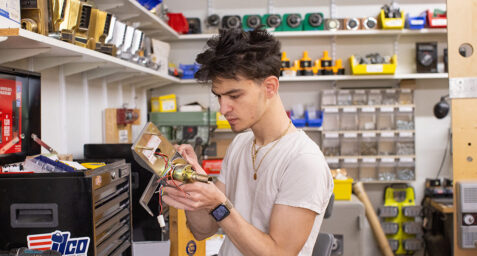Conversations in Craft Spotlight: Ellen Kaspern

Categories
AlumniEllen Kaspern CF ’03: Twig lanterns, Mahogany, pear, poplar, sycamore, copper, glass
Paired with Twig table, ca. 1920, from the collection of the Lyman Reserve
On first glance, these petite lanterns could easily hang alongside the twig table at one of New England’s historic camps. Yet these lanterns hold personal meaning for Ellen as well. She included branches from a pear tree at her childhood home that fell after Hurricane Sandy, and sycamore branches were collected from her sister’s home.
Ellen laughingly reflected, “small doesn’t mean easier,” as she decided to construct these lanterns using only mortise and tenon joints, and no nails.
The lantern itself is a symbol of NBSS, which has played a central role in her career. She incorporated stamps that symbolize the addresses of her family’s homes, the numbers made with a set of old steel punches that were from her father’s workshop. Ellen reflected when she set out on this process, “I had not realized this would have such a connection to me.” She also laughingly reflected, “small doesn’t mean easier,” as she decided to construct these lanterns using only mortise and tenon joints, and no nails.
Ellen has been a custom furniture maker since graduating from the Cabinet & Furniture Making program in 2003. She owns Ellen Kaspern Design, and is a member of the cooperative Fort Point Cabinetmakers in Boston. In addition to designing and building custom furniture, she demonstrates woodworking techniques throughout the New England area. Her skills have been presented at the National Museum of Industrial History, Old Sturbridge Village, Peabody Essex Museum, Concord Museum, Plymouth Plantation, as well as other institutions in the Boston area.

This is part 7 of a 13-part series on the artisans in “Conversations in Craft,” a collaborative exhibit with NBSS and Fruitlands Museum.
Read Part 6: Matt Huffman | Read Part 8: Miguel Gómez-Ibáñez


